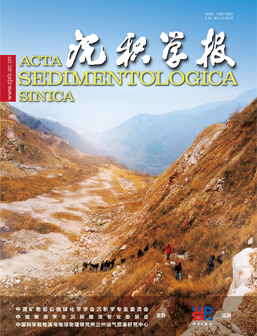Sequence stratigraphy and sedimentary evolution of Middle Permian-Early Triassic in Fars area, southern Persian Gulf
doi: 10.14027/j.issn.1000-0550.2024.010
- Received Date: 2023-09-04
- Available Online: 2024-03-11
-
Key words:
- Sequence stratigraphy /
- Sedimentary evolution /
- Dalan-kangan Formation /
- Middle Permian-Early Triassic /
- Fars region, Southern Persian Gulf
Abstract: The Middle Permian to Lower Triassic stratigraphy in the Fars region of the southern Persian Gulf harbors substantial oil and gas resources, making it a focal area for China's overseas exploration efforts. The current research lacks a comprehensive sequence stratigraphy and a macroscopic understanding of the sedimentary evolution of the entire oil-bearing succession. This study focuses on the Middle to Upper Permian Dalan Formation and the Lower Triassic Kangan Formation in the region. Utilizing data from individual wells, cross-sections, core samples, thin sections, well logging, and IHS and C&C databases, along with consideration of regional geological context and existing knowledge, the Middle Permian to Early Triassic in the study area is stratigraphically divided into sequences. The study provides an in-depth analysis of the characteristics and evolution of each sequence's sedimentary systems. The results indicate that the Dalan-Kangan formations in the study area exhibit six sequence boundaries and five maximum flooding surfaces. Based on the types of sequence boundaries and the development of maximum flooding surfaces, the Dalan and Kangan formations in the southern Persian Gulf are subdivided into five third-order sequences. The targeted lithology is predominantly carbonate ramp deposits, further categorized into inner ramp, mid-ramp, and outer ramp subfacies. The inner ramp can be subdivided into six depositional microfacies: Sabkha in the intertidal zone, tidal flat, lagoon, back-barrier, shoal middle, and shoal front. The study area represents an arid and hot shallow-water carbonate deposition environment. During the SQ1-SQ2 deposition period, a predominantly progradational sedimentary model is observed, while the SQ3 deposition period follows a retrogradational and aggradational model. The SQ4 deposition period returns to a progradational model, and the SQ5 deposition period is characterized by a retrogradational model.
| Citation: | Sequence stratigraphy and sedimentary evolution of Middle Permian-Early Triassic in Fars area, southern Persian Gulf[J]. Acta Sedimentologica Sinica. doi: 10.14027/j.issn.1000-0550.2024.010 |






 DownLoad:
DownLoad: